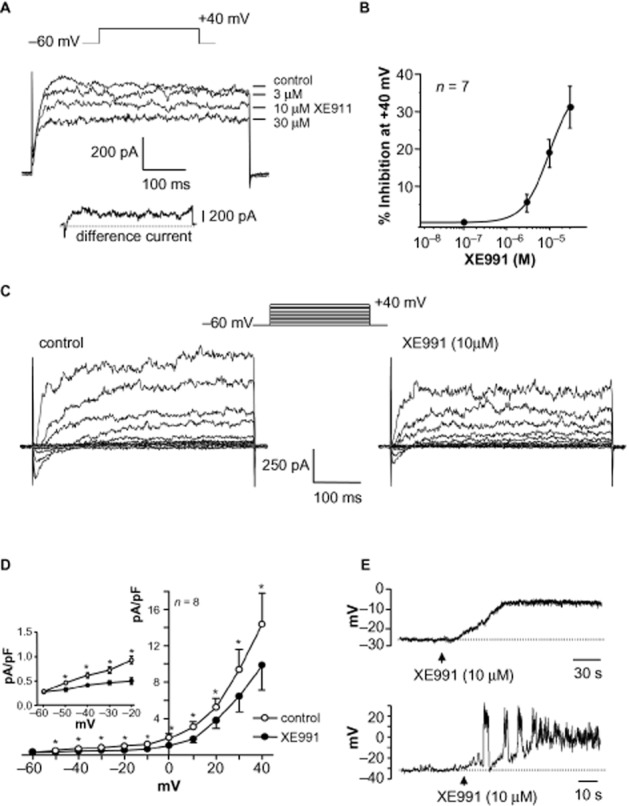Figure 4.

Effect of XE991 on outward current and resting membrane potential in SMC. (A) Currents were evoked by stepping from −60 mV to +40 mV using a pipette solution containing EGTA (5 mM) and ATP (3 mM) to eliminate BK and KATP currents. XE991 reduced the total outward current in a concentration-dependent fashion. The inset trace shows the non-inactivating XE991-sensitive current, obtained by subtracting the trace in 30 μM XE991 from the control trace. (B) Concentration–response curve for the effect of XE991 on peak outward current. Current amplitude in presence of drug was normalized to control and plotted as % inhibition. Mean data for seven cells was fitted with a Hill equation, which calculated the IC50 to be 9.9 ± 0.003 μM. (C) Family of currents evoked by stepping from −60 mV to a range of increasingly positive potentials as denoted in the voltage protocol. XE991 (10 μM) reduced the amplitude of outward currents across the voltage range. (D) Summary current density–voltage graph illustrating the effect of XE991 in eight cells. Inset shows the current density data for −50 mV to −20 mV on an expanded scale. *P < 0.05, significant effect of XE991. (E) An example of the depolarization caused by XE991 (10 μM) in a quiescent SMC (upper trace). The XE991-evoked depolarization was sometimes sufficient to evoke spontaneous transient depolarizations (lower trace).
